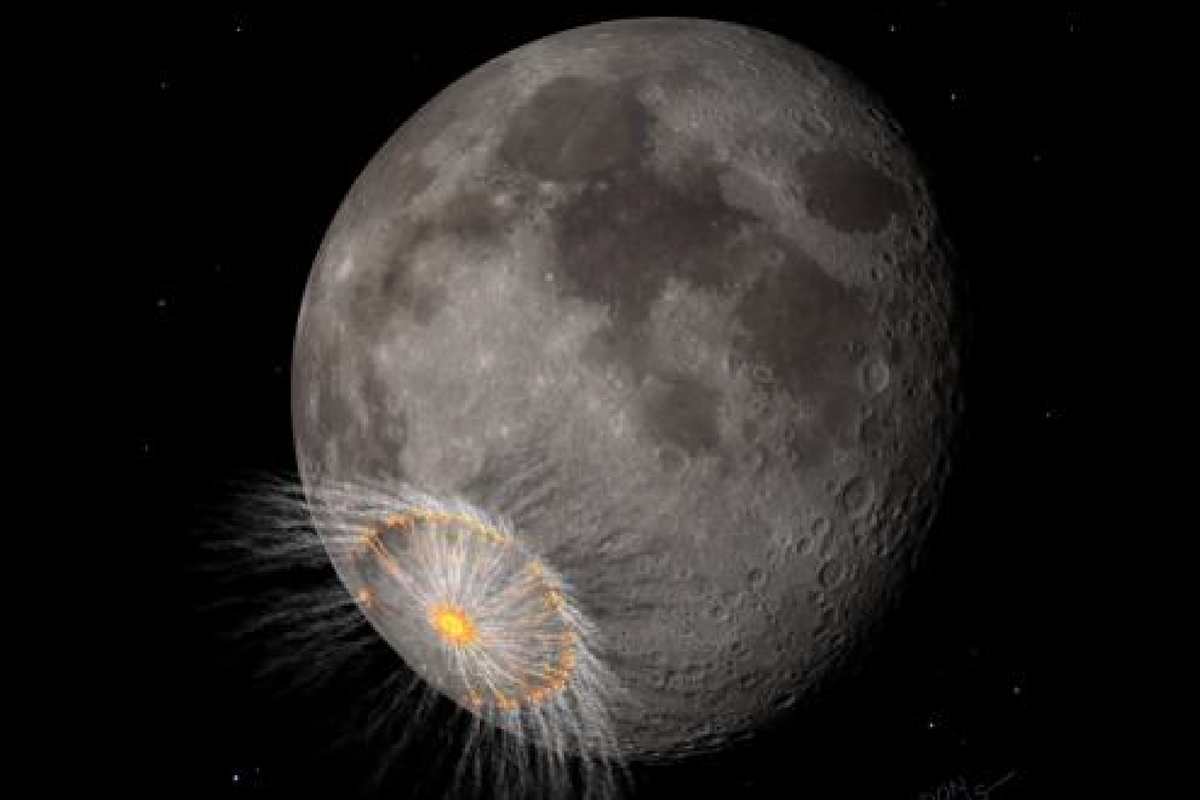New calculations suggest that a large asteroid recently predicted to have an increased odds of striking Earth could miss the planet and might instead impact the Moon.
Nasa’s Center for Near Earth Object Studies, or Cneos, reviewed the trajectory of the asteroid 2024 YR4 and found that its odds of striking the planet in 2032 doubled to 2.3 per cent up from about 1 per cent.
Now, new calculations by University of Arizona astronomer David Rankin have reportedly found that there is a slim chance of about 0.3 per cent of the 90-metre-wide asteroid crashing onto the Moon.
Since the Moon does not have an atmosphere like the Earth to slow down asteroids, a potential impact by the giant space rock could create a crater hundreds of metres wide, ejecting debris into space.
Scientists suspect that if 2024 YR4 impacts the Moon, some debris from Earth’s neighbour might rain back onto the planet.

“There is the possibility this would eject some material back out that could hit the Earth, but I highly doubt it would cause any major threat,” Dr Rankin told New Scientist.
There is still some uncertainty about the trajectory of the asteroid, which was first spotted on 27 December last year.
Nasa hopes to continue to study the giant space rock and expects its chances of colliding with Earth could be revised down as it learns further about its path.
“There have been several objects in the past that have risen on the risk list and eventually dropped off as more data have come in,” the American space agency said.
“New observations may result in reassignment of this asteroid to 0 as more data come in,” it said.
Space agencies across the world are probing ways to counter the threat posed by hazardous “city-killer” asteroids like 2024 YR4.
Some of these experimental methods include slamming a spacecraft onto them or attempting to move them off course with nuclear blasts.
China has also recently joined these efforts and has announced vacancies for multiple roles for a “planetary defence post”.
China’s State Administration of Science, Technology and Industry for National Defence responsible for the country’s aerospace engineering research is recruiting graduates to study asteroid monitoring, SCMP reported on Tuesday.
“We must cultivate a team of talent dedicated to asteroid defence and contribute Chinese wisdom and Chinese strength to protecting the safety of the Earth,” said Li Mingtao, a researcher working on asteroid defence at China’s National Space Science Centre.
China announced a conceptual plan last year for a mission to observe and strike an asteroid with a spacecraft to alter its path around 2030.
The asteroid 2024 YR4 is expected to pass by Earth safely again in 2028 when researchers hope to gain further insights and determine more clearly its probability of hitting the Earth in 2032.




